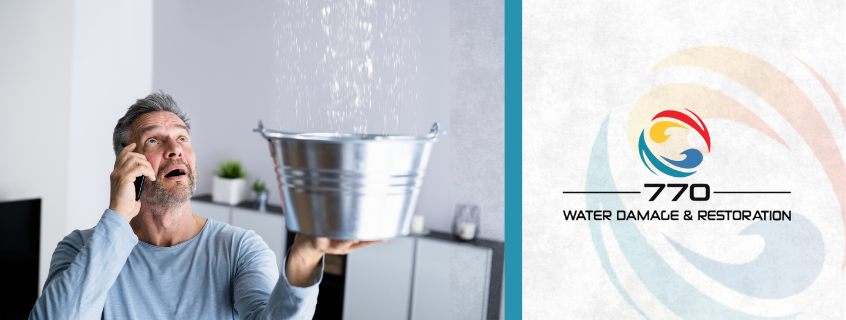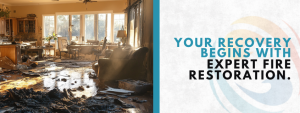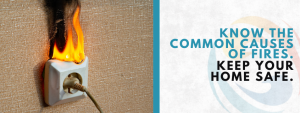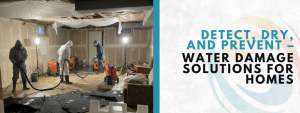
Shopping for a new home or rental unit? It can be exciting—but also nerve-racking. Whether you’re thinking about buying a forever home or signing a lease for your next apartment, one step you should never skip is a property inspection. Knowing what to look for can save you thousands of dollars, headaches, and stress down the road. That’s why we’ve gathered ten easy-to-understand property inspection tips that every buyer and renter should know.
You don’t need to be an expert. With the right questions and a keen eye, you can spot potential red flags before you commit. Let’s walk through what to check—and why it matters—in simple, everyday language.
Start your home search the smart way by checking out this helpful homeowner’s guide to restoration and safety to prepare for any surprise issues.
Look Beyond the Surface
That freshly painted wall or shiny new floors may look perfect, but sometimes, those cosmetic upgrades are just cover-ups for bigger problems. Look closely. Don’t be afraid to touch, tap, or ask questions.
Here are a few ways to look deeper:
- Check inside cabinets and closets for water stains or mold.
- Push on the walls to feel for soft spots.
- Test all light switches and outlets.
- Lift rugs or mats to see what’s underneath.
These quick checks can help you spot issues like leaks, faulty wiring, or floor damage early on.
Property inspection tips often start with reminding people that beauty isn’t everything. Take your time to explore behind and beneath what’s immediately visible. Property inspection tips like these keep you ahead of surprises.
Watch for Water Warnings
Water damage is one of the most costly problems in any home or apartment. Even small leaks can grow into huge headaches.
Signs of water trouble include:
- Discoloration on ceilings or walls
- Peeling paint or bubbling wallpaper
- A musty smell, especially in basements
- Warped floors or cracked tiles
Even if everything looks dry now, past water issues can leave lasting damage. This is why checking for any signs of leaks or past flooding is crucial.
To understand how water issues can impact your new place, see this detailed breakdown of water damage signs and solutions.
Property inspection tips always include checking for moisture or water stains. Don’t skip this—it’s a common sign that something’s not right. Property inspection tips like these can save you from future disasters.
Examine Doors and Windows
Your doors and windows do more than keep out bugs. They help control your energy bills and keep your home secure. Make sure they open, close, and lock properly.
Quick checklist for doors and windows:
- Open and close every window and door.
- Check for drafts around the frames.
- Look for cracks in the glass or signs of rot on wooden frames.
- Test all locks and latches.
If you find any of these issues, they may seem small but could lead to heating and cooling problems or safety concerns.
Property inspection tips often emphasize that poorly sealed doors or windows can cost more in energy bills. Also, they can be signs of foundation issues. Property inspection tips like this one help protect your budget and your comfort.
Focus on the Floors
Floors often reveal what’s going on underneath the surface. Walking around barefoot might seem strange, but it’s a great way to feel for dips, squeaks, or soft spots.
Here’s what to do:
- Walk slowly through each room.
- Step in corners and near walls.
- Look for uneven tiles or warped floorboards.
- Listen for creaks or hollow sounds.
Don’t forget to peek under rugs if you can. Flooring repairs can be expensive, and soft or sagging spots can indicate problems with the structure.
Property inspection tips stress the importance of floor checks, especially in older buildings. Property inspection tips also recommend noting how floors feel as you move—your feet often notice what your eyes miss.
Check the Plumbing Fixtures
You don’t need to be a plumber to catch obvious signs of plumbing trouble. Simply turn on faucets, flush toilets, and run the shower.
Plumbing checklist:
- Check how fast water drains in sinks and tubs.
- Turn on hot and cold water—make sure both work.
- Look under sinks for leaks or water damage.
- Flush each toilet and listen for odd sounds.
Slow drains and drips are early signs of bigger problems. Replacing plumbing can be costly, so it’s better to know what you’re getting into.
Property inspection tips make plumbing a top priority. Water issues affect everything from comfort to cost. Property inspection tips like this one help renters and buyers avoid hidden repair bills.
Test Out the Electrical System
An outdated or faulty electrical system can be both inconvenient and dangerous. You don’t have to open any panels—just pay attention to what happens when you flip a switch or plug something in.
Simple electrical tests:
- Flip every light switch.
- Plug in your phone or charger to check outlets.
- Ask if the breaker box has been updated.
- Look for exposed wires or missing cover plates.
If lights flicker or outlets spark, it’s a red flag. These could point to old wiring or overloaded circuits.
Property inspection tips often include testing outlets and light switches to avoid surprises. Faulty electrical systems are a safety concern, and property inspection tips remind buyers to get a professional opinion when in doubt.
Pay Attention to the Smells
Your nose can be one of the best tools during a property inspection. Every home has its scent, but unusual smells should raise concern.
Common odors to watch for:
- Musty or damp smells could mean mold or mildew.
- Sewage-like odors may point to plumbing issues.
- A strong air freshener might be covering up something.
Take a moment to stand in each room and breathe in. Don’t ignore odd or overwhelming smells.
Property inspection tips say trust your senses. A strange smell is usually a clue, not just a quirk. Property inspection tips suggest walking through more than once to catch anything missed the first time.
Inspect Heating and Cooling Systems
You want to be comfortable in your new home, so make sure heating and cooling systems are up to the task. Repairs can be expensive, and some units may be outdated or inefficient.
HVAC check essentials:
- Ask how old the furnace and A/C unit are.
- Check vents for dust buildup or blockage.
- Feel if air flows evenly in every room.
- Look at the thermostat to see if it works properly.
If a unit looks rusty, loud, or neglected, that’s a bad sign.
Property inspection tips recommend confirming that systems are serviced regularly. This helps you avoid high bills and unexpected breakdowns. Property inspection tips also suggest requesting service records if possible.
Review the Roof and Foundation
These are two of the most expensive parts of any home. They’re also easy to overlook. You might not be able to inspect the roof up close, but a general visual check can still tell you a lot.
Roof and foundation pointers:
- Look for missing shingles or sagging sections.
- Walk around the outside and check for large cracks in the foundation.
- Ask when the roof was last replaced.
- Look inside the attic for signs of leaks or daylight coming through.
If you’re unsure, it’s okay to hire a professional to inspect these areas. It could save you from massive repair costs.
Property inspection tips always emphasize the roof and foundation. They are your protection from the elements. Property inspection tips like these can alert you before it’s too late.
Ask for Documentation and Disclosures
Finally, always ask for paperwork. Sellers and landlords are usually required to disclose known problems, and you deserve to have those details.
Ask for these items:
- Inspection reports or maintenance records
- History of repairs or upgrades
- Warranty info for appliances or systems
- Disclosures about mold, water damage, or pests
Having this information helps you make an informed decision. It also gives you peace of mind.
Property inspection tips include being thorough, not just with your eyes, but with your questions. Property inspection tips also advise that if something seems off or missing, don’t be afraid to speak up.
Handy Table: What to Check and Why
| Area to Inspect | What to Look For | Why It Matters |
| Walls and Ceilings | Stains, cracks, peeling paint | Signs of water damage or poor maintenance |
| Floors | Warping, squeaking, soft spots | Potential structural issues |
| Plumbing | Leaks, slow drains, mold smell | Can indicate expensive repairs |
| Electrical | Flickering lights, bad outlets | Safety and power issues |
| Windows & Doors | Drafts, cracks, sticking | Energy costs and security |
| HVAC Systems | Airflow, noise, maintenance records | Comfort and utility savings |
| Roof & Foundation | Cracks, dips, rust, rot | Big repair costs |
| Documentation | Disclosures, past inspections, warranties | Transparency and future planning |
Looking to understand what happens when homes face unexpected damage? This resource on handling serious property issues provides smart tips for every homeowner.
Final Thoughts
A good inspection isn’t just for buyers—it’s just as useful for renters. When you know what to look for, you feel more confident and less anxious about your choice. Keep these property inspection tips in mind every time you step into a potential home. They help you notice what’s hidden behind fresh paint, new carpet, or sweet-smelling candles.
Buying or renting a property is a big decision, but it doesn’t have to feel like a gamble. With these simple property inspection tips, you can spot the signs of a great home—or a problem waiting to happen.
If something doesn’t feel right, trust your instincts. Ask questions. Bring a friend or hire a professional. In the end, being thorough now means fewer surprises later—and that’s the kind of peace of mind every homeowner or renter deserves.
Frequently Asked Questions About Property Inspections
What should I look for first when inspecting a property?
Start by checking for visible water damage, cracks in walls or ceilings, and the condition of floors. These areas often reveal hidden issues early on.
How do I know if a home has water damage before I move in?
Look for stains, peeling paint, a musty smell, or warped flooring. These signs can mean past or current leaks that might lead to bigger problems.
Should I still inspect a rental if it looks brand new?
Yes, even new or renovated places can have underlying issues like faulty wiring or poor plumbing. A walkthrough helps ensure everything works and is safe.
Can I do a property inspection by myself without a professional?
You can do a basic check yourself, especially with the right tips, but it’s best to bring a professional for more complex areas like roofs or foundations. They can spot what the untrained eye might miss.
Why do I need to test light switches, faucets, and windows?
Testing them helps uncover electrical or plumbing issues and ensures the home is fully functional. It also gives you a better sense of overall maintenance.






